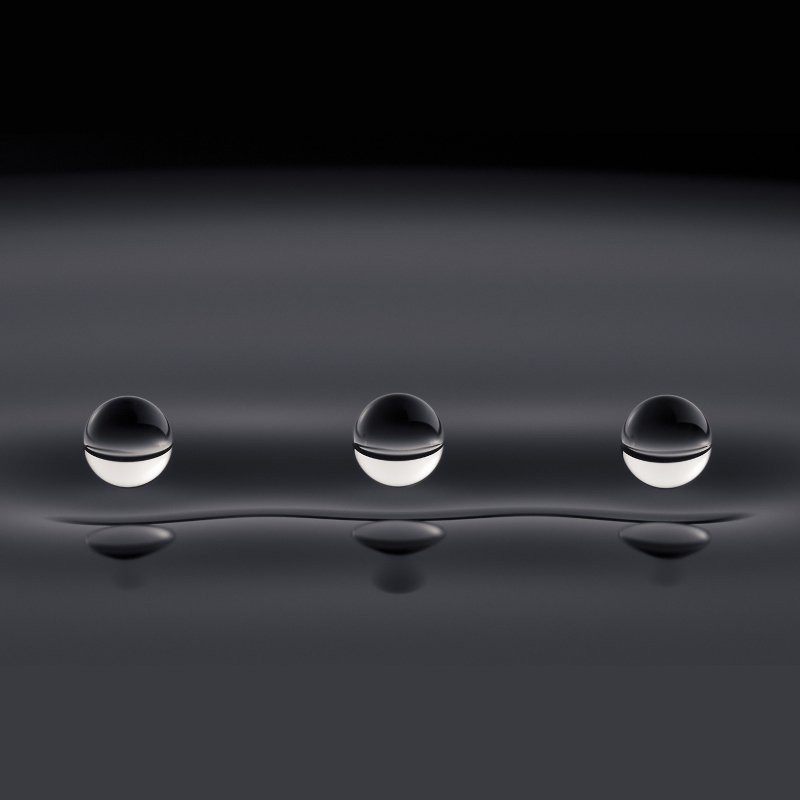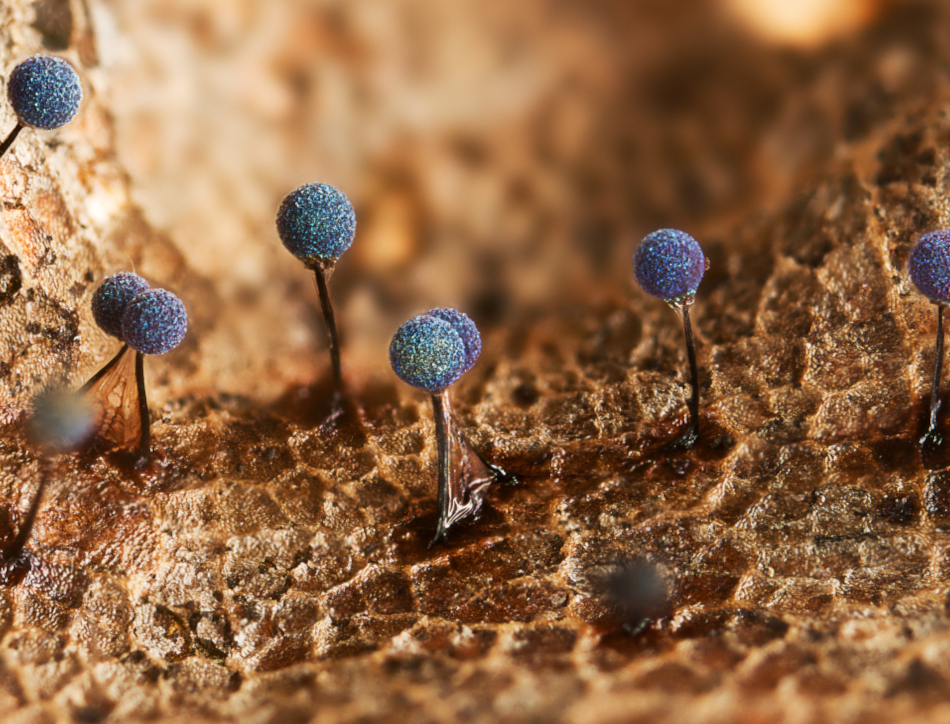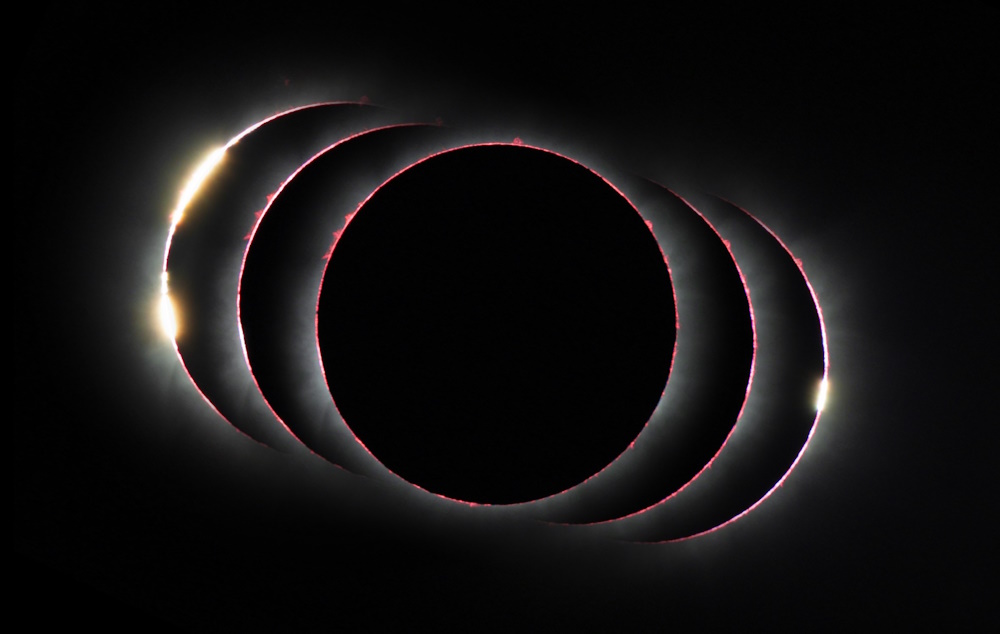Finalists 2019
Scientists were invited to submit their images to the 2019 Royal Society Publishing Photography Competition, and hundreds of images were entered in the categories of Astronomy, Behaviour, Earth Science and Climatology, Ecology and Environmental Science and Micro-imaging. These were judged by Jon Blundy FRS, Subject Editor for Royal Society Open Science; Ineke De Moortel, Editorial Board Member for Philosophical Transactions A and Ulrike Muller, Associate Editor for Proceedings of the Royal Society B. Each image was scrutinised for its aesthetics and the scientific phenomenon it conveyed.
We are now delighted to present the finalists below. From a picture of the moon to an image of surgical thread 0.25mm in diameter, and birds in a fight to the gentle meeting between a fish and a jellyfish, we hope you enjoy what our entrants captured.
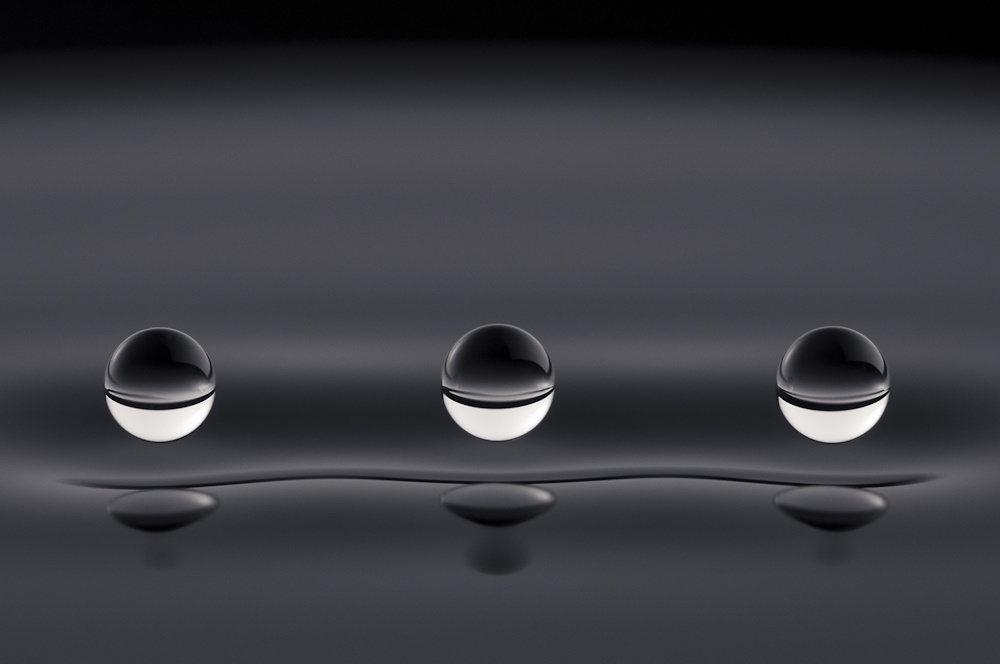
Competition winner 'Quantum droplets' by Aleks Labuda, in collaboration with Jan Belina. 'This photograph represents experimental proof of the theoretical work in the field of hydrodynamic quantum analogs. These silicone oil droplets are bouncing indefinitely above a vibrating pool of silicone oil at 15 Hz. The surface waves generated by the droplets are analogous to quantum mechanical waves that guide the dynamics of quantum particles. While the droplets move like quantum particles, they behave like quantum waves. The droplets' wave fields mediate their interactions with their surroundings, with each other, and even with themselves - similarly to electrons in the double-slit experiment. Such bouncing droplets were discovered in 2005 by Yves Couder (Université Paris Diderot) and mark the first real-world demonstration of the pilot-wave theory postulated by de Broglie in 1927. This behaviour provides measurable and intuitive insight into the mystery of particle-wave duality. Post processing involved simple contrasting and colour balancing. Camera: Nikon D700: 1/200; f/16; ISO200; 105mm.'
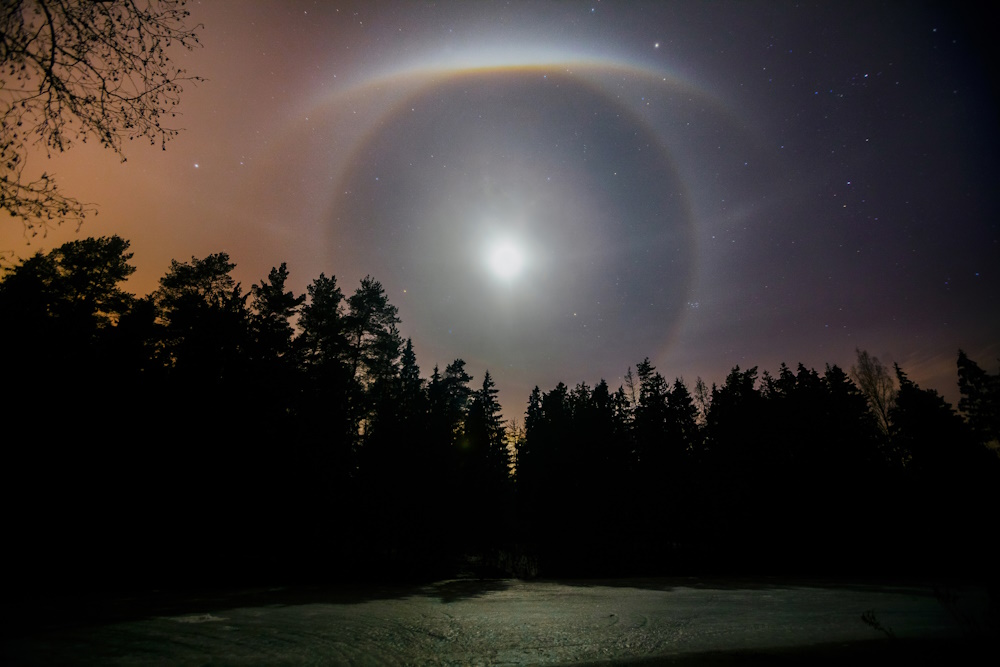
Astronomy Winner 'Halo' by Mikhail Kapychka. 'Lunar halo over the night forest lake, Mogilev,Belarus. I suddenly saw an unusual lunar halo in the night sky and hurried outside the city into the forest to take a picture of it. A halo appears in the sky when several factors are combined. Often it is observed in frosty weather in conditions of high humidity. In the air at the same time there is a large number of ice crystals. Passing through them, the lunar or solar light is refracted in a special way, forming an arc around the moon or sun. Processing: Colour correction, exposure, brightness, curves. Camera: Canon 5d mark2, canon 16-35mm 2.8, f/4.5, iso-800, 30s.'
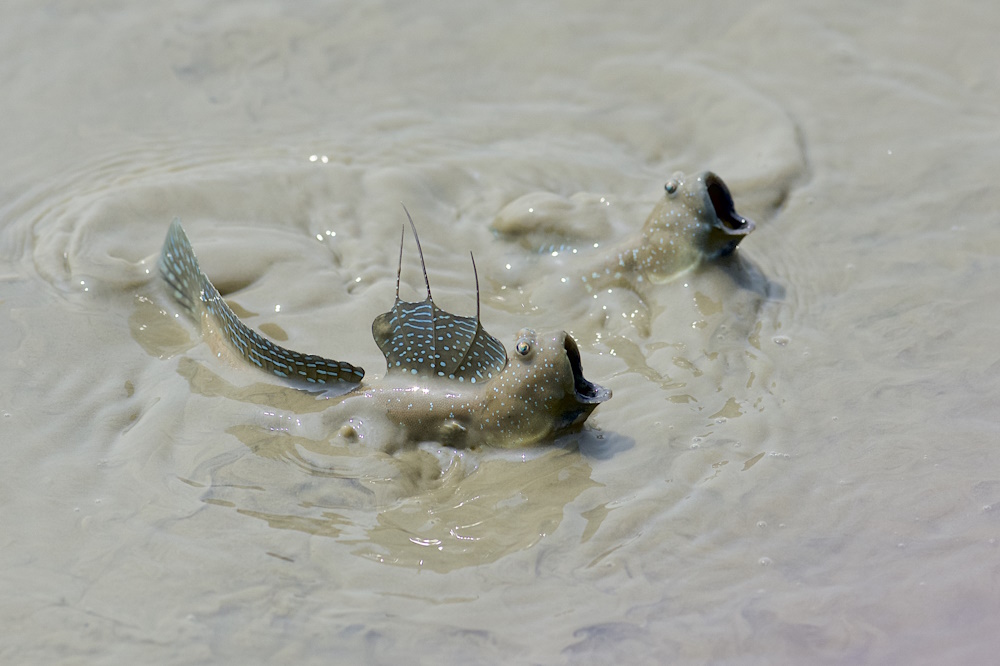
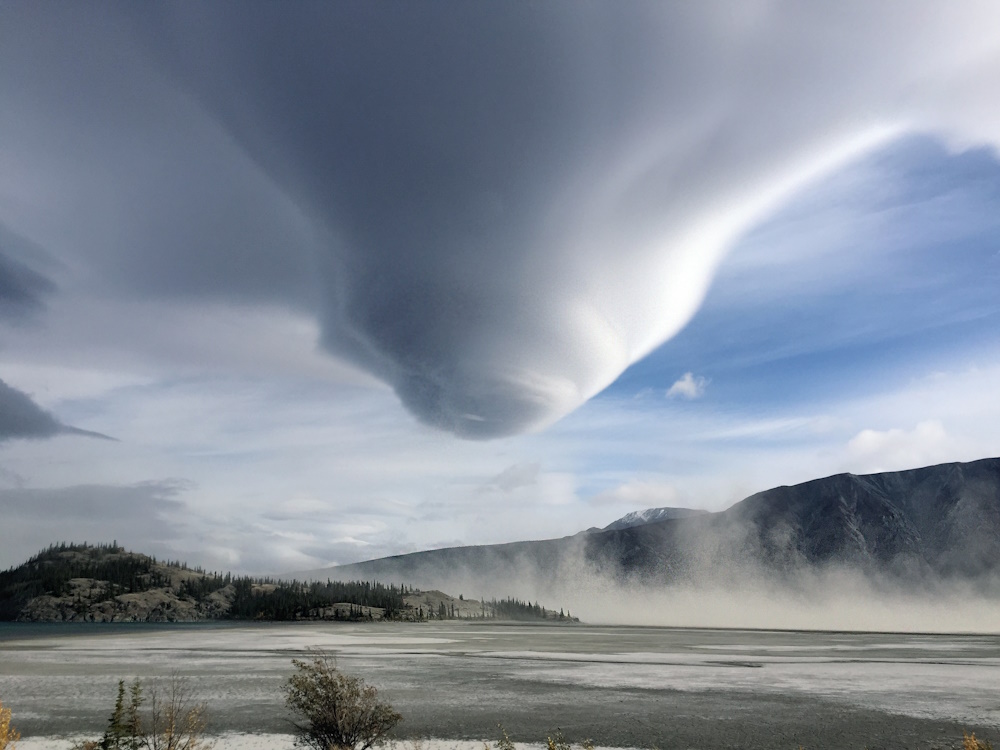
Earth Science and Climatology Winner 'Twister in the Yukon' by Lauren Marchant. 'This photo was taken near to Kluane Lake Research Station in the Yukon, Canada. It depicts a large, cone-shaped, funnel cloud. A funnel cloud forms when water droplets are drawn in from the surrounding area by a rotating column of wind, making a region of intense low pressure visible to the human eye. Most tornados begin as funnel clouds. However, this funnel cloud never made contact with the ground and therefore could not be classified as a tornado. The photo was taken with the iPhone 6 rear camera which is the 8 megapixel (f2.2, 1.5micron, 1/3 sensor) with autofocus and enhanced using Adobe Photoshop (Photoshop: I turned down the highlights -15, and turned up the contrast +20).'
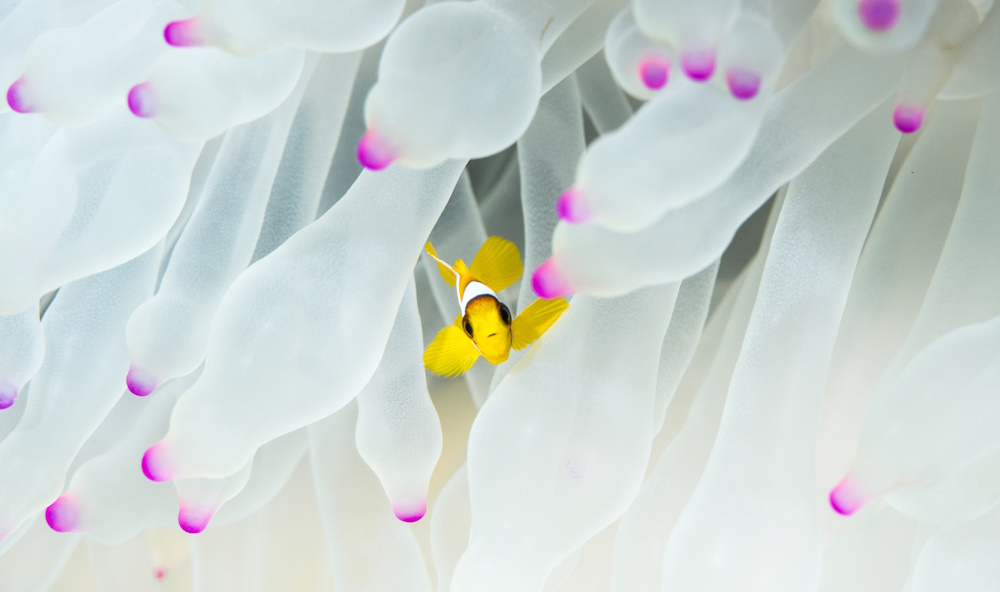
Ecology and Environmental Science Winner 'Fade to white' by Morgan Bennett-Smith. 'A juvenile Red Sea clownfish (Amphiprion bicinctus) looks out from between the clear tentacles of a bleaching sea anemone (Entacmea quadricolor) in Thuwal, Saudi Arabia. Coral reef bleaching events impact entire ecological communities, not just coral species. When sea temperatures reach intolerable levels, many anthozoan species expel their symbiotic algal partners (zooxanthellae—symbiodiniaceae), which typically results in colour loss and high mortality. While reef-building corals may be the most direct victims of such events, other species can be similarly affected. Some sea anemones, for example, also expel their colourful symbionts during periods of climactic stress. In the central Red Sea, some of our work in the Reef Ecology Lab focuses on the impacts of anemone bleaching on clownfish-anemone dynamics. As bleaching events continue to increase in frequency and intensity, sea anemones, and their clownfish tenants, may feel the heat. In post production, I cropped the image into a wider format, sharpened slightly and white balanced. Camera: Olympus OMD EM1 II. Lens: Olympus 60mm 2.8 macro lens. I used 2 sea and sea YSD2J strobes. My base settings were ISO 200, shutter 1/125, F9.'
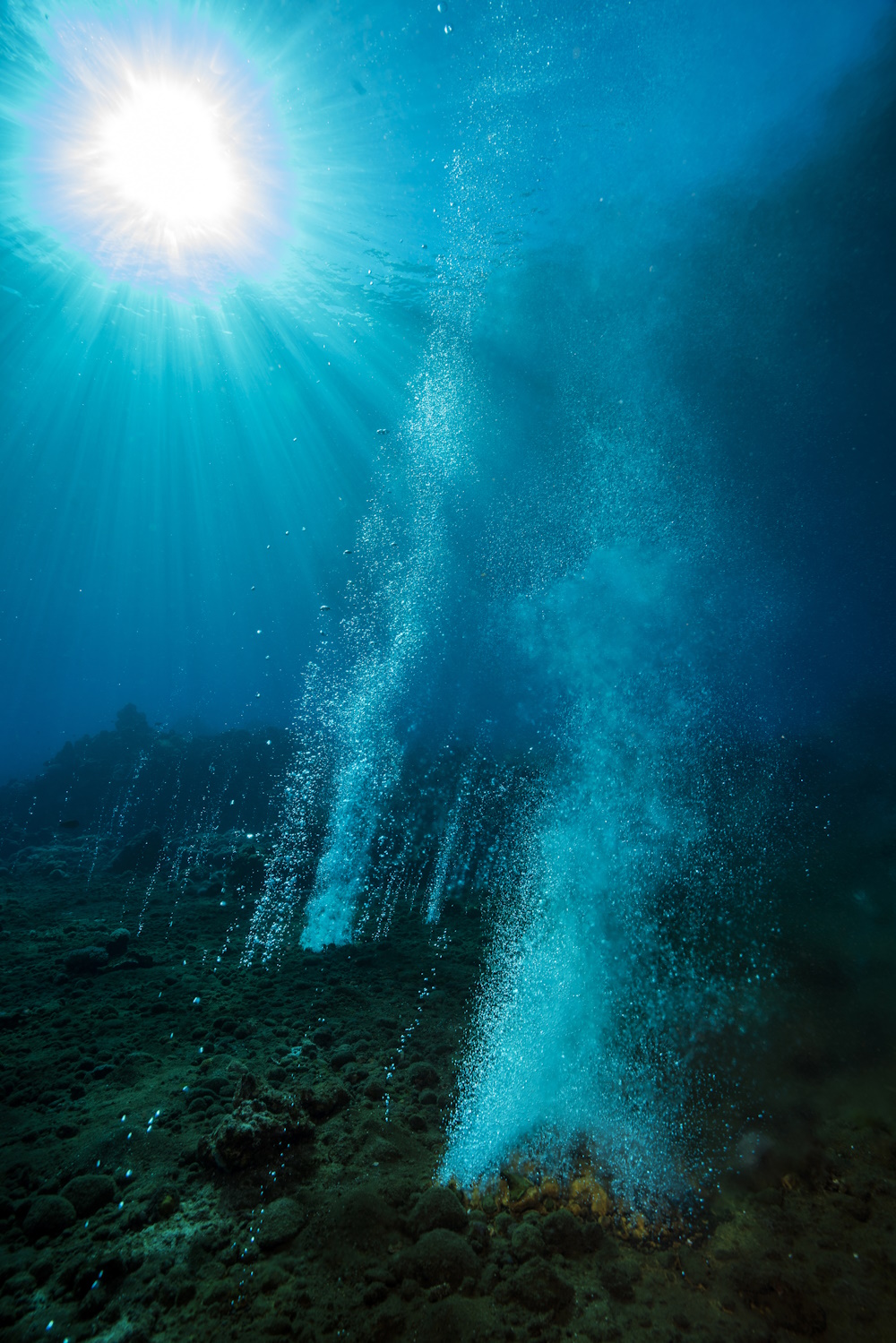
Earth Science and Climatology Runner up 'Fizzy sea' by Tom Shlesinger. 'Coral reefs are among the most diverse and productive ecosystems on our planet. However, pollution, over-fishing and the release of gases into the atmosphere are causing acidification and warming of the oceans to levels that corals are no longer able to tolerate. This photo was taken while on a scientific expedition to Ambitle Island, Papua New Guinea, as part of the Coral Reef Acclimatization to Ocean Acidification (CARIOCA) project. Volcanic carbon dioxide can be seen fizzling from the seafloor alongside diverse and healthy coral reefs. These underwater volcanic seeps add heated water with high concentrations of carbon dioxide that results in temperature and acidity levels similar to those expected at the end of the century, and commonly regarded as too extreme for corals' survival. This site offers a unique and authentic 'natural laboratory' for the study of the effects of climate change (ocean acidification and global warming) on coral reefs. Despite having acidity levels that are commonly regarded as too extreme for corals to even build their calcareous skeletons, the reefs in this area are surprisingly thriving. Minor adjustments were made using Adobe Photoshop CS6 (contrast, levels). Camera: Sony a7RIII camera. Lens: 16-35 mm (f2.8) lens within a Nauticam underwater housing equipped with a Retra strobe.'
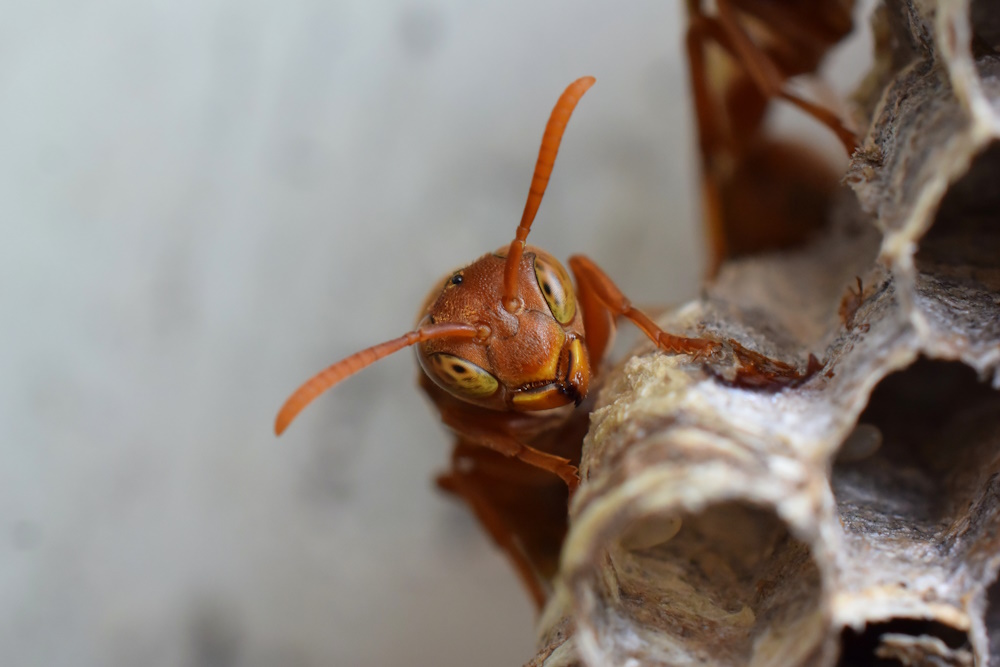
Ecology and Environmental Science Runner up 'A vigilant soldier' by Abhijeet Bayani. 'Ropalidia marginata is a primitively eusocial wasp found in southern India. Their nests are built in concealed places as they do not seem to have evolved any active safeguard against their deadliest predator, Vespa tropica. Having vigilant females on their nests can only alarm other nestmates but they do not impede Vespa from foraging on their brood. I found this out when I took this picture inside a tubelight panel and was stung by several vigilant soldiers. No post-processing for image was required. Camera: Nikon 1 V3. Lens: AF-S Micro NIKKOR 40 mm. Shutter speed: 1/60, ISO 800. Aperture: f/13. No flash.'
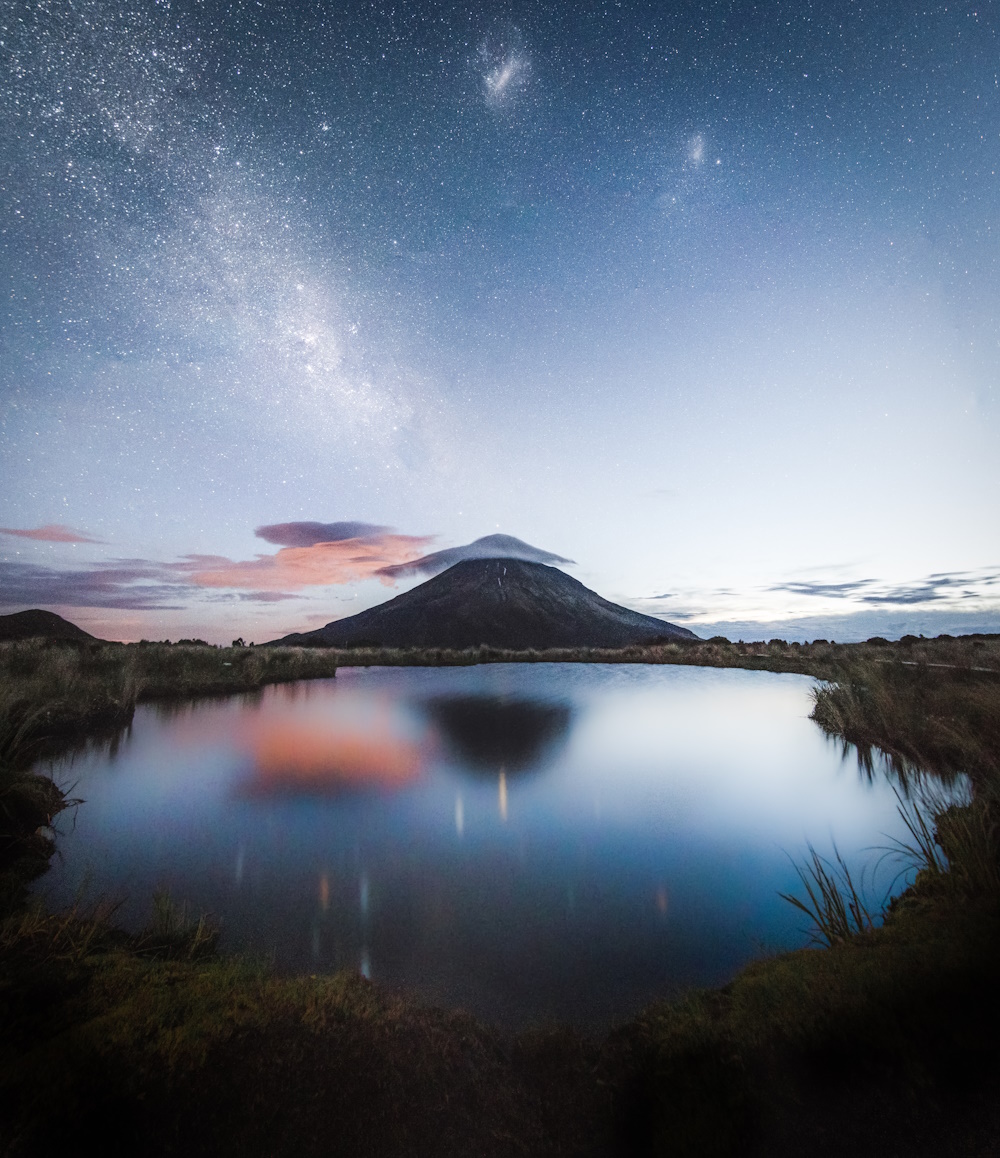
Astronomy Runner up 'Taranaki Stars' by James Orr. 'This is an image of the Milky Way and the two Magellanic Clouds above Mount Taranki, a 2500m active stratovolcano, on New Zealand's North Island. The two Magellanic Clouds are dwarf galaxies over 150,000 light years away that can only be seen in the Southern Hemisphere's night sky. After a tough hike up to this viewpoint, we spent a good eight hours watching the clouds thin, the sun set and the Milky Way appear. By midnight, the sky was full of stars but a sliver of moon was just bright enough to light up the incredible landscape in front of us. Just before we started the hike back down, I took this vertical panorama made up of four 25-second exposures. They were stitched together during post-processing. Camera: Canon 70D. Lens: Tokina 11-16 f2.8.'
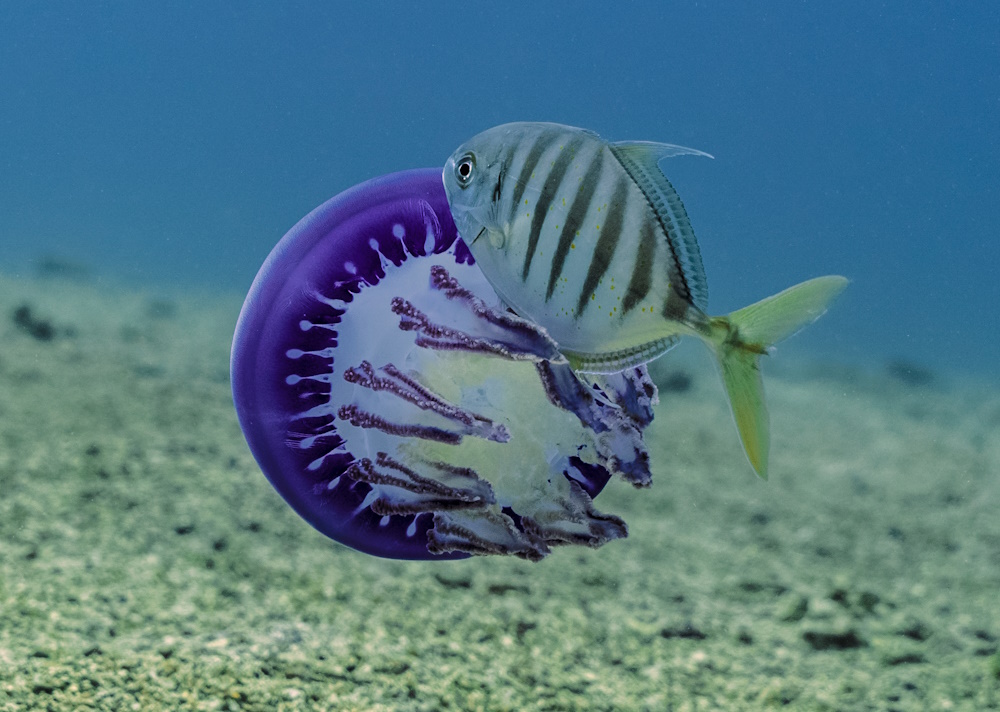
Behaviour Runner up 'Jellyfish association' by Eduardo Sampaio. 'Jellyfish-fish associations happen for a multitude of reasons. However, in this case, it is the simplest one: predation. A young blue (a.k.a. banded) trevally (Carangoides ferdau) feeds on the purple jellyfish (Thysanostoma loriferum), and guards it against others that may have the same idea. Given the length and thickness of these tentacles, together with the fact that jellyfish can regenerate its cells at a considerable speed, this interaction can be sustained for several days. When jellyfish are large, they can also be used as shelter by fish. The photo has been slightly processed through cropping, adjusting colour balance, contrast and saturation. Camera: Sony Alpha II. Lens: Sony f/4 24-70mm. F-stop: f/9. Exposure time: 1/2000 sec. ISO: 200. Focal length: 70 mm.'
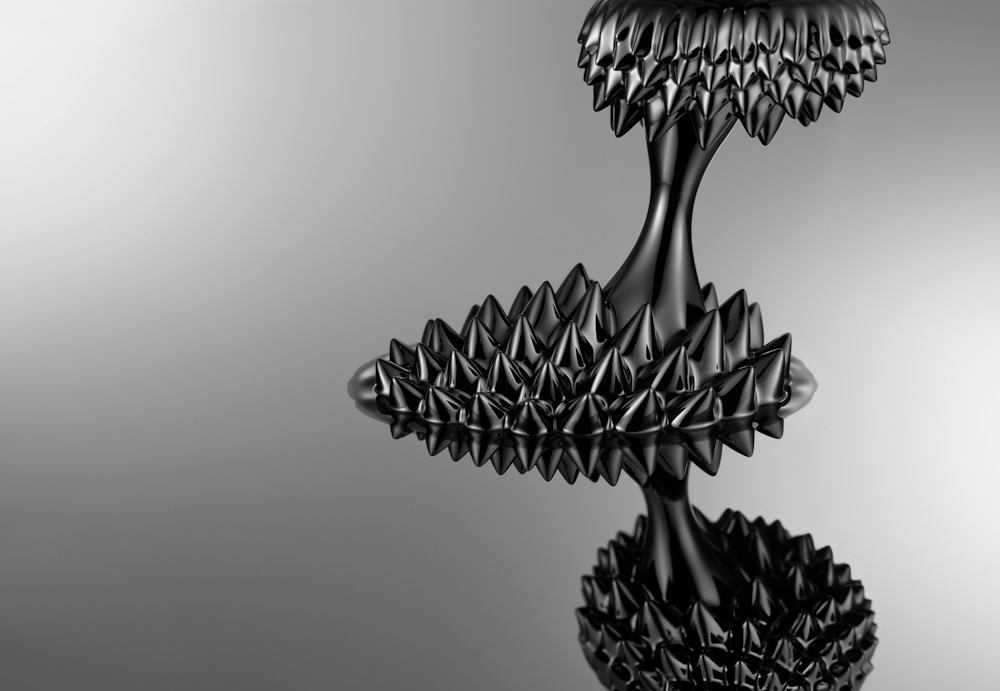
Micro-imaging Runner up 'Magnetostatic spawn' by Aleks Labuda. 'Ferrofluids are colloidal liquids made of nanoscale ferromagnetic particles suspended in a carrier fluid. Surfactants in the fluid prevent the agglomeration of the nanoparticles because their strong van der Waals forces exceed the particles' weak magnetic attraction. Reducing the size of the magnetite (or hematite) nanoparticles to below 10 nm is key in preventing their precipitation from the carrier fluid. At such length scales, Brownian motion ensures their indefinite suspension under normal conditions. This photograph demonstrates the magnetic properties of this liquid as it shape shifts under the magnetic field setup by two carefully positioned rare-earth disc magnets. One magnet lies below a silicon wafer, while the other hangs from above. The protruding cones are a result of the compromise between the minimization of magnetic energy versus the minimization of surface free energy. Camera: Nikon, 105mm; F36; 1/250s; ISO100. Lens: Macro lens.'

